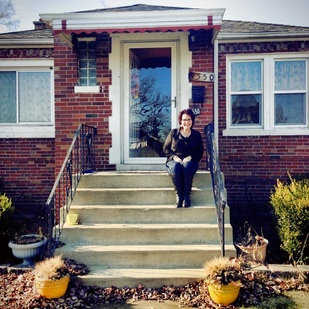|
The Tiny House movement is quickly spreading across the United States. Many millennials are trading in the "white picket fence" and American dream home with a simpler, less materialistic life; living debt-free and having more time to explore the great outdoors by thinking tiny. In the 1950s and 1960s, suburban areas were seen as exclusive retreats for the upper class as cities and large towns became manufacturing centers filled with industrial workers and factories. Ironically, the rise of suburbia was compromised by its new found affordability and popularity. The promise of exclusiveness and privilege was turned into a Lego Land of conformity. By the late 1980's, the rise of cookie cutter neighborhoods inhibited many downtown cores and urban sprawl was at its height as families moved further from the downtown core and the average size of a new single family home expanded from 983 sq. ft. (average in the 1960's) to over 2,500 sq. ft. (in 2013). While the square feet of homes nearly tripled, the average price of a home today is around $300,000 with a tiny home being a 1/10th of the cost. While mobile trailer neighborhoods were seen as viable options for the poverty stricken during the 20th century, the same square feet on a restored version of these mobile homes are now considered a smart purchase decision to live debt free. After binge-watching an entire season of FYI's Tiny House Nation, I reflected on my time in different houses growing up. The first eleven years of my life, I lived in a modest apartment in Chicago with my family; sharing a room with my twin brother, Eric.  My mom and I visited the house she grew up in when we visited Chicago in the fall of 2014. My mom and I visited the house she grew up in when we visited Chicago in the fall of 2014. We learned that bunk beds helped expand the play area of a bedroom by 50% and although I frequently fell off the top bunk, it was worth it. My mom would drive us by her old house, in Evergreen Park, IL, where her and up to 12 family members lived at one time in this 1,100 sq. ft. bungalow. When I moved into a 800 sq. ft. house down the street from The University of Memphis two years ago, I felt most comfortable knowing that there was no space to be wasted; plenty of room to complete my daily duties and have a few friends over, and even a roommate. With the average size of a tiny home coming in at 400 sq. ft., half the size of my previous home, we'll see if my dreams of living tiny will come true in the future as I spend this semester interviewing tiny home owners, researching best practices, and spending time in ones across the Mid-South.
0 Comments
Leave a Reply. |
Andrew BartolottaI'm a tiny home swooner looking to maximize my life without drowning in debt. Over the next semester, I'll be writing about those who live tiny and its benefits as part of the University of Memphis' Advanced Social Media class. Archives
November 2015
Categories |


 RSS Feed
RSS Feed
